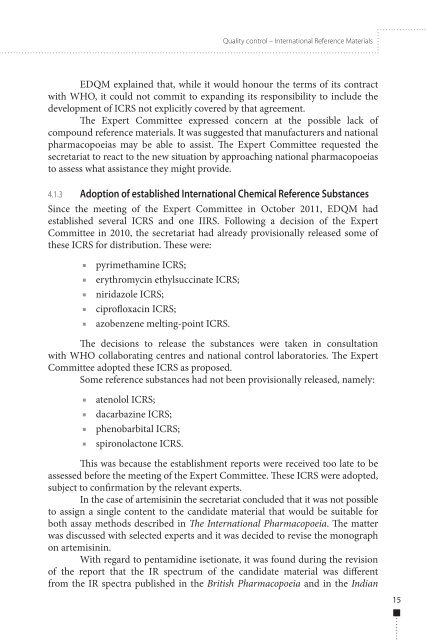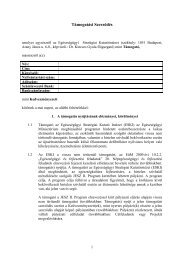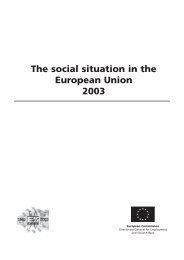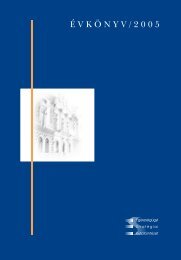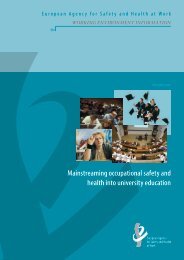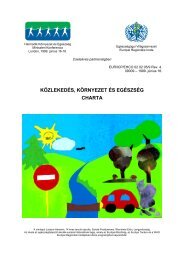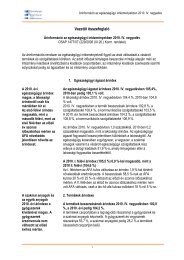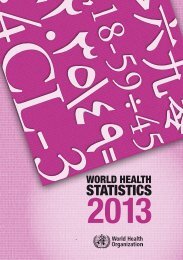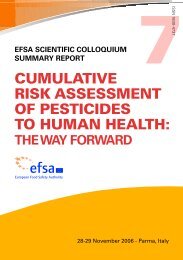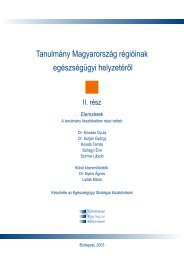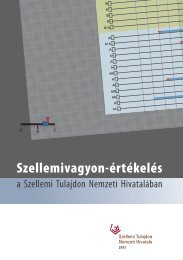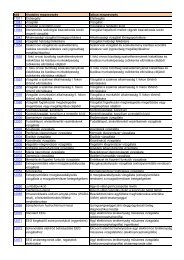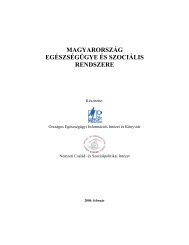WHO Technical Report Series, No. 981 - World Health Organization
WHO Technical Report Series, No. 981 - World Health Organization
WHO Technical Report Series, No. 981 - World Health Organization
You also want an ePaper? Increase the reach of your titles
YUMPU automatically turns print PDFs into web optimized ePapers that Google loves.
Quality control – International Reference Materials<br />
EDQM explained that, while it would honour the terms of its contract<br />
with <strong>WHO</strong>, it could not commit to expanding its responsibility to include the<br />
development of ICRS not explicitly covered by that agreement.<br />
The Expert Committee expressed concern at the possible lack of<br />
compound reference materials. It was suggested that manufacturers and national<br />
pharmacopoeias may be able to assist. The Expert Committee requested the<br />
secretariat to react to the new situation by approaching national pharmacopoeias<br />
to assess what assistance they might provide.<br />
4.1.3 Adoption of established International Chemical Reference Substances<br />
Since the meeting of the Expert Committee in October 2011, EDQM had<br />
established several ICRS and one IIRS. Following a decision of the Expert<br />
Committee in 2010, the secretariat had already provisionally released some of<br />
these ICRS for distribution. These were:<br />
■■<br />
■■<br />
■■<br />
■■<br />
■■<br />
pyrimethamine ICRS;<br />
erythromycin ethylsuccinate ICRS;<br />
niridazole ICRS;<br />
ciprofloxacin ICRS;<br />
azobenzene melting-point ICRS.<br />
The decisions to release the substances were taken in consultation<br />
with <strong>WHO</strong> collaborating centres and national control laboratories. The Expert<br />
Committee adopted these ICRS as proposed.<br />
Some reference substances had not been provisionally released, namely:<br />
■■<br />
■■<br />
■■<br />
■■<br />
atenolol ICRS;<br />
dacarbazine ICRS;<br />
phenobarbital ICRS;<br />
spironolactone ICRS.<br />
This was because the establishment reports were received too late to be<br />
assessed before the meeting of the Expert Committee. These ICRS were adopted,<br />
subject to confirmation by the relevant experts.<br />
In the case of artemisinin the secretariat concluded that it was not possible<br />
to assign a single content to the candidate material that would be suitable for<br />
both assay methods described in The International Pharmacopoeia. The matter<br />
was discussed with selected experts and it was decided to revise the monograph<br />
on artemisinin.<br />
With regard to pentamidine isetionate, it was found during the revision<br />
of the report that the IR spectrum of the candidate material was different<br />
from the IR spectra published in the British Pharmacopoeia and in the Indian<br />
15


